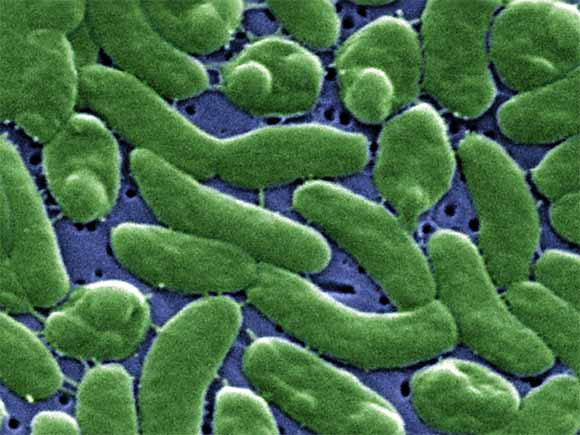Climate change creates many intestinal bacteria
Climate change is the main cause of some intestinal infectious bacteria in Northern Europe. This is unusual because the bacteria often grow in warm and tropical environments.
This conclusion by international scientists, published in the journal Natural Climate Change on July 22, is the first clear evidence that the state of the Baltic Sea warming occurs at the same time as the Current Vibrios bacteria cause digestive diseases here, such as cholera and diarrhea.

Vibrios bacteria
In the study, British, Finnish, Spanish and American scientists examined sea surface temperature, satellite data, and statistics on Vibrios infection. Baltic Sea.
The scientists found that the number of bacterial infections here is closely related to the level of sea surface temperature increase. Specifically, each year the temperature increases by one degree and the number of Vibrios infections increases by nearly 200%.
The study also found that outbreaks of disease caused by Vibrios bacteria also occur in areas with mild or cold climates in Chile, Peru, Israel, the Northwestern United States, Pacific and Western regions. Northern Spain, and the scientific community believes that this may also be a consequence of climate change.
According to many climate studies, the increase in emissions causing greenhouse effect in the air makes the average temperature on the surface of the Earth increase about 0.17 degrees Celsius since 1980-2010.
Research by European and American scientists focused on the Baltic Sea because the area has heated up at an unprecedented rate, at 0.063-0.078 degrees Celsius / year during the period from 1982 to 2010, equivalent to 6.3-7.8 degrees Celsius / century.
Scientists note that Vibrious bacteria will appear in new areas as sea temperature continues to rise.
- 'Hack' intestinal bacteria of cows can bring more meat and reduce pollution
- Climate change facilitates bacterial spread in Northern Europe
- This seemingly harmless bacterium killed one third of the world's population
- The impact of climate change on bacteria
- Detecting intestinal bacteria helps to lose weight
- Identify herbivores, eat meat through intestinal bacteria
- Discover more types of beneficial bacteria in the intestinal tract
- Feces of newborns - abundance of bacteria!
- How does food strongly affect the intestinal tract?
- This is how Dubai copes with climate change
- Bacteria in the gut can change the aging process
- What is Climate Change?
 Is the magnetic North Pole shift dangerous to humanity?
Is the magnetic North Pole shift dangerous to humanity? Washington legalizes the recycling of human bodies into fertilizer
Washington legalizes the recycling of human bodies into fertilizer Lightning stone - the mysterious guest
Lightning stone - the mysterious guest Stunned by the mysterious sunset, strange appearance
Stunned by the mysterious sunset, strange appearance